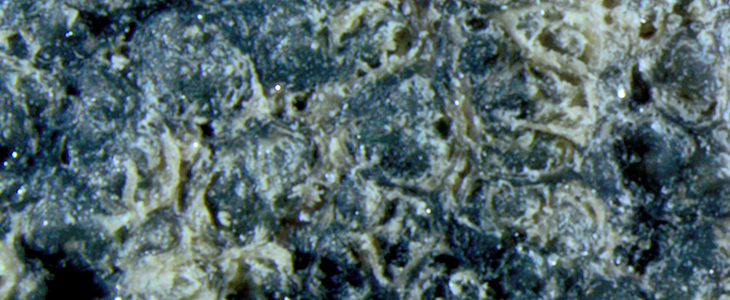How to Apply
Interested in participating in this research project? Contact the professor or graduate student listed below.
Professor
Dr. Ali Dhinojwala (Polymer Science) | ali4@uakron.edu
Graduate Student
Nathaniel Orndorf | nao15@zips.uakron.edu
Project Description

Understanding the physical and chemical interactions between ice and materials is of interest in order to tune adhesion and friction on ice to meet various material demands. For example, it is important for tires to have good traction on ice and snow, and low ice adhesion coatings are needed for applications on aircraft, power lines, wind turbines, and costal structures/ships. This project aims to find specific material surface properties in nature that have been evolved to either increase or decrease ice nucleation, adhesion, and/or friction.

Currently, we are studying the footpad surface topography of polar bears and black bears. By comparing the surface roughness across all length scales of the two species, we can hypothesis on specific surface topographies that the polar bear might have evolved in order to gain better traction on ice and snow. Footpads have been characterized via optical microcopy and optical profilometry, but further analysis using atomic force microscopy (AFM) and scanning elctron microscopy (SEM) is still needed. Additionally, we would like to add a grizzly bear to the analysis, along with adding more specimines of the same species to account for individual variation. Once the characterization is complete, we will calculate the expected effect of the topographies on ice adhesion and friction using the current framework present in the scientific literature. Polymers of varying bulk properties and surface chemistries will be molded to mimic footpads of live bears and test the effects of the various surface morphologies on ice adhesion and friction.

Other biological systems that interact with ice (or supercooled water) are also of interest, including other mammal’s footpads, insects, plants, bird feathers, etc. These interactions can have origins in either surface chemistry or surface topography.
Participants in this project will gain experience in surface characterization, adhesion and friction measurments, and the thought process of biomimicry in material science. It is expected that a student significantly helping with the project will be an author on at least one peer reviewed publication.
Project Dates
Spring 2020, Summer 2020, and/or Fall 2020
Search Terms
Advanced Materials, Biomimicry, STEM
